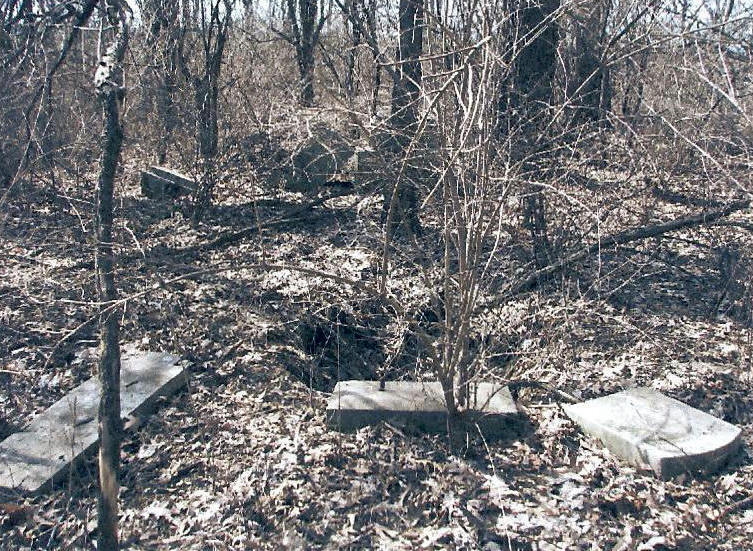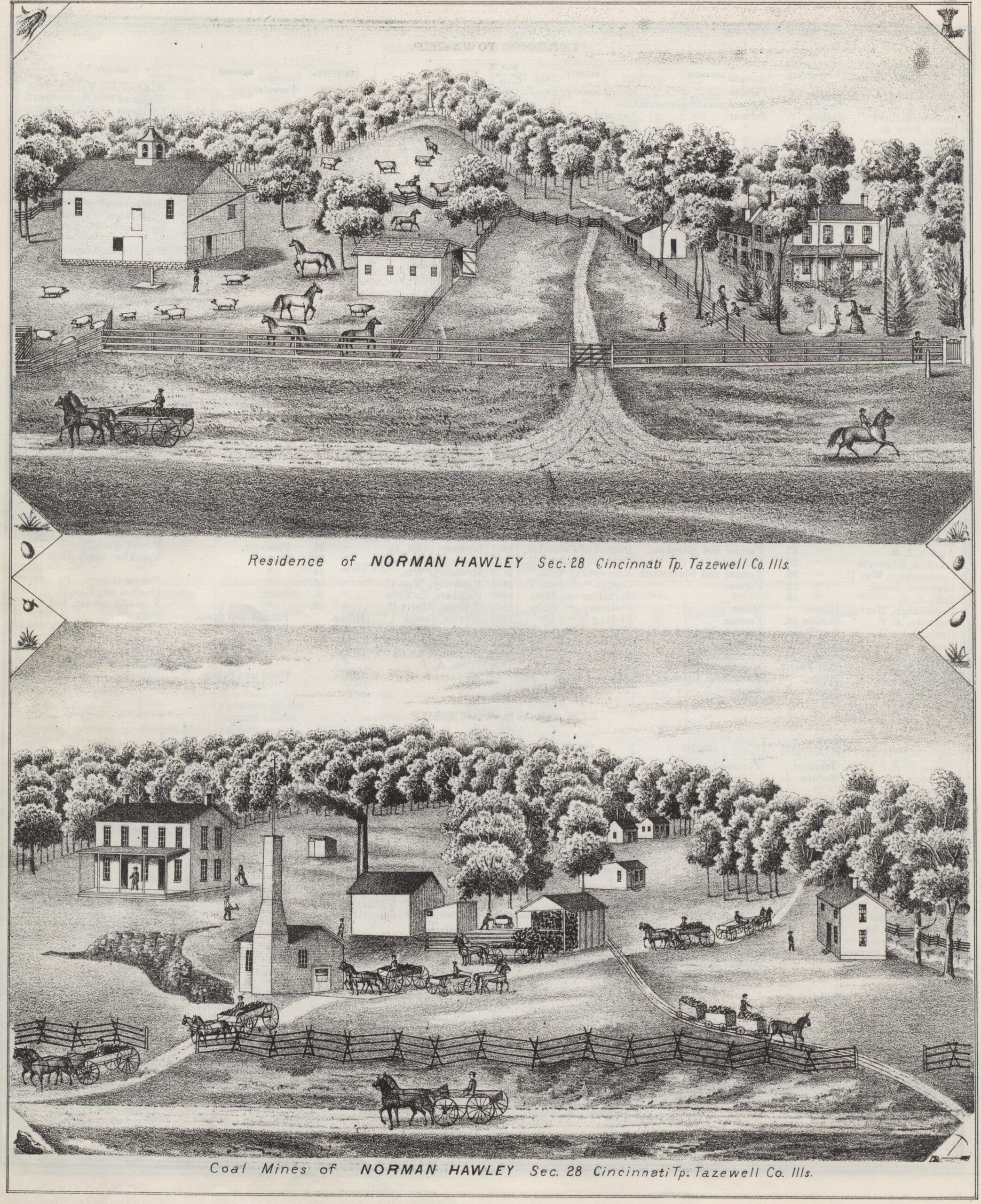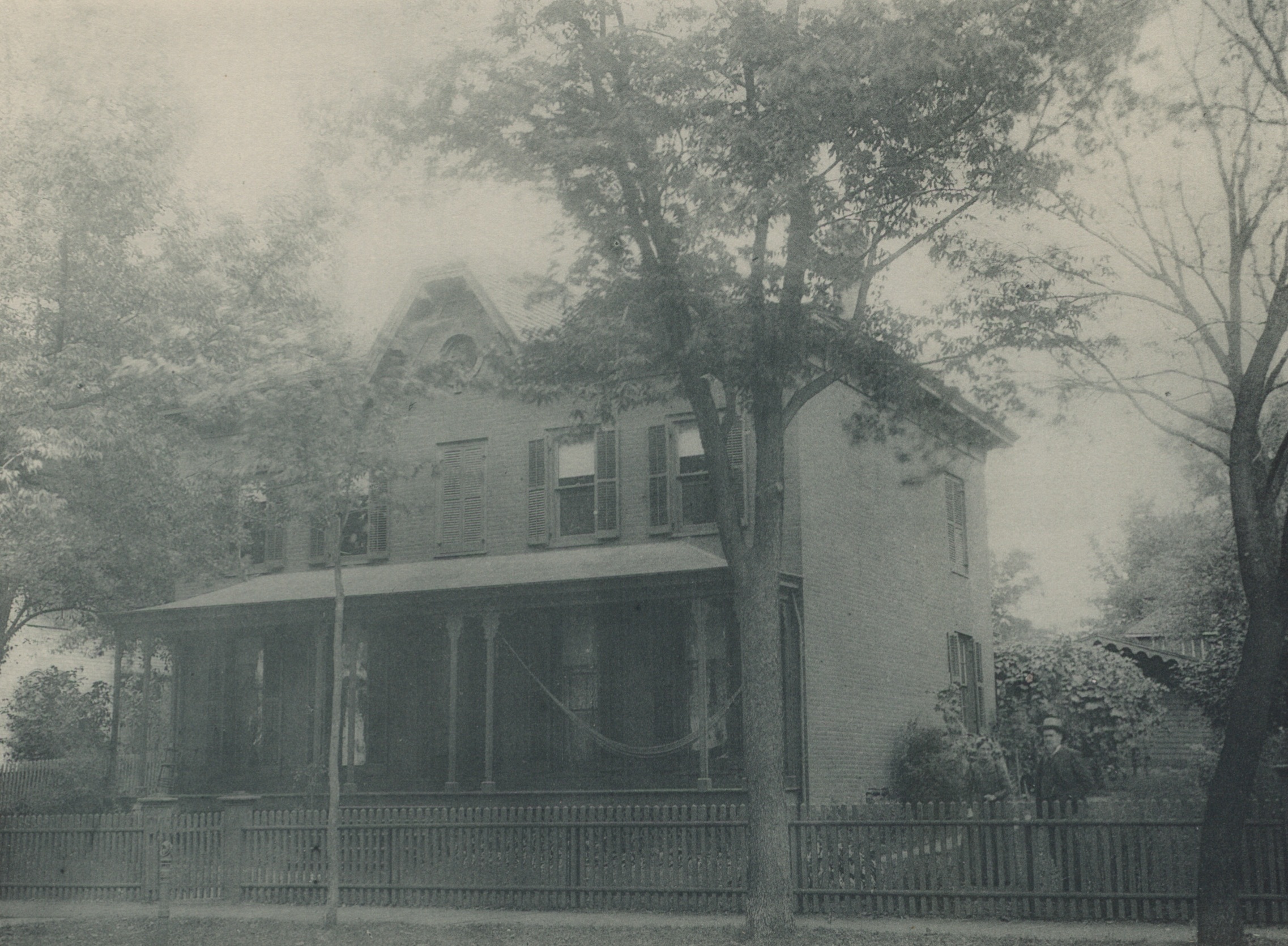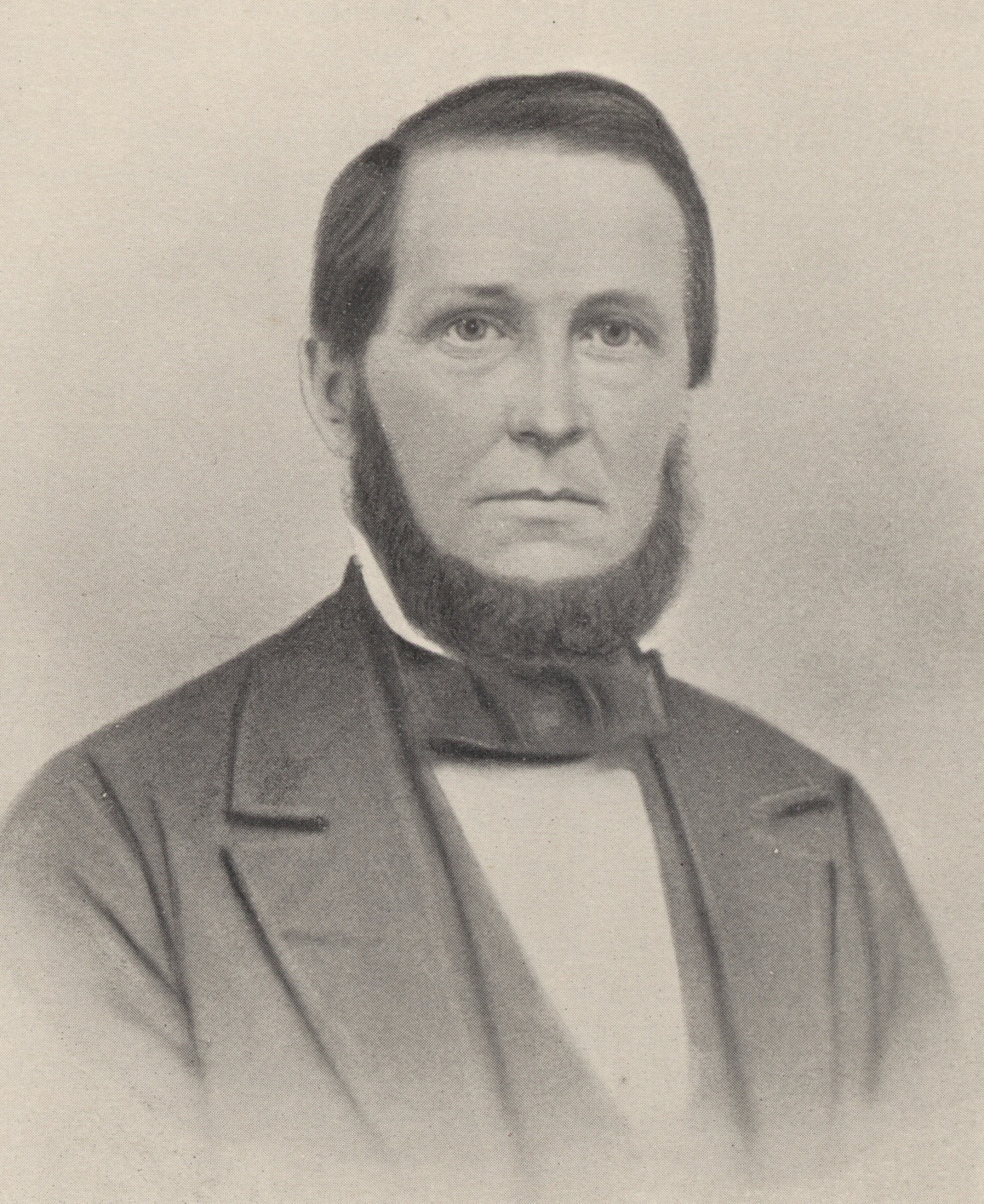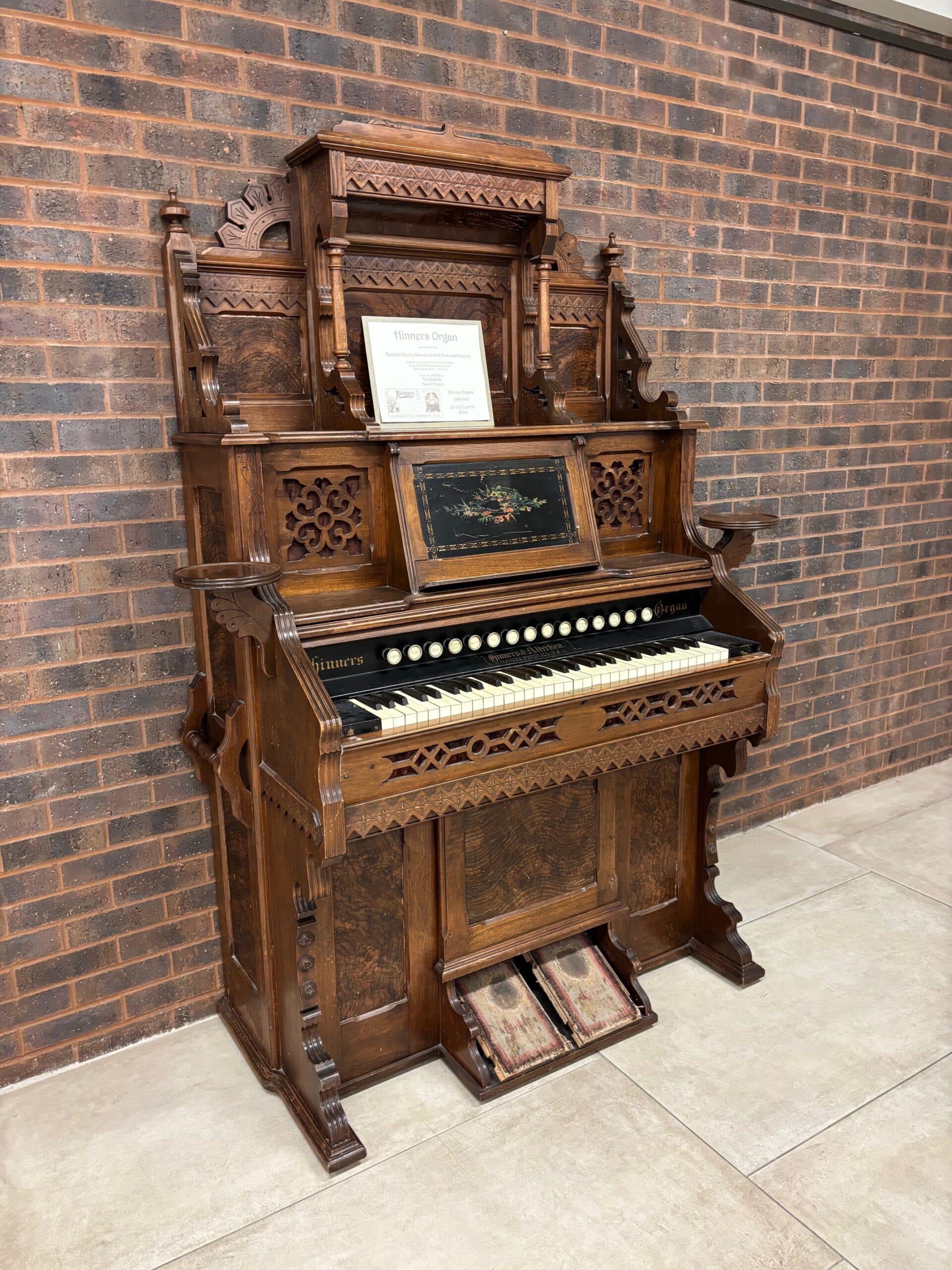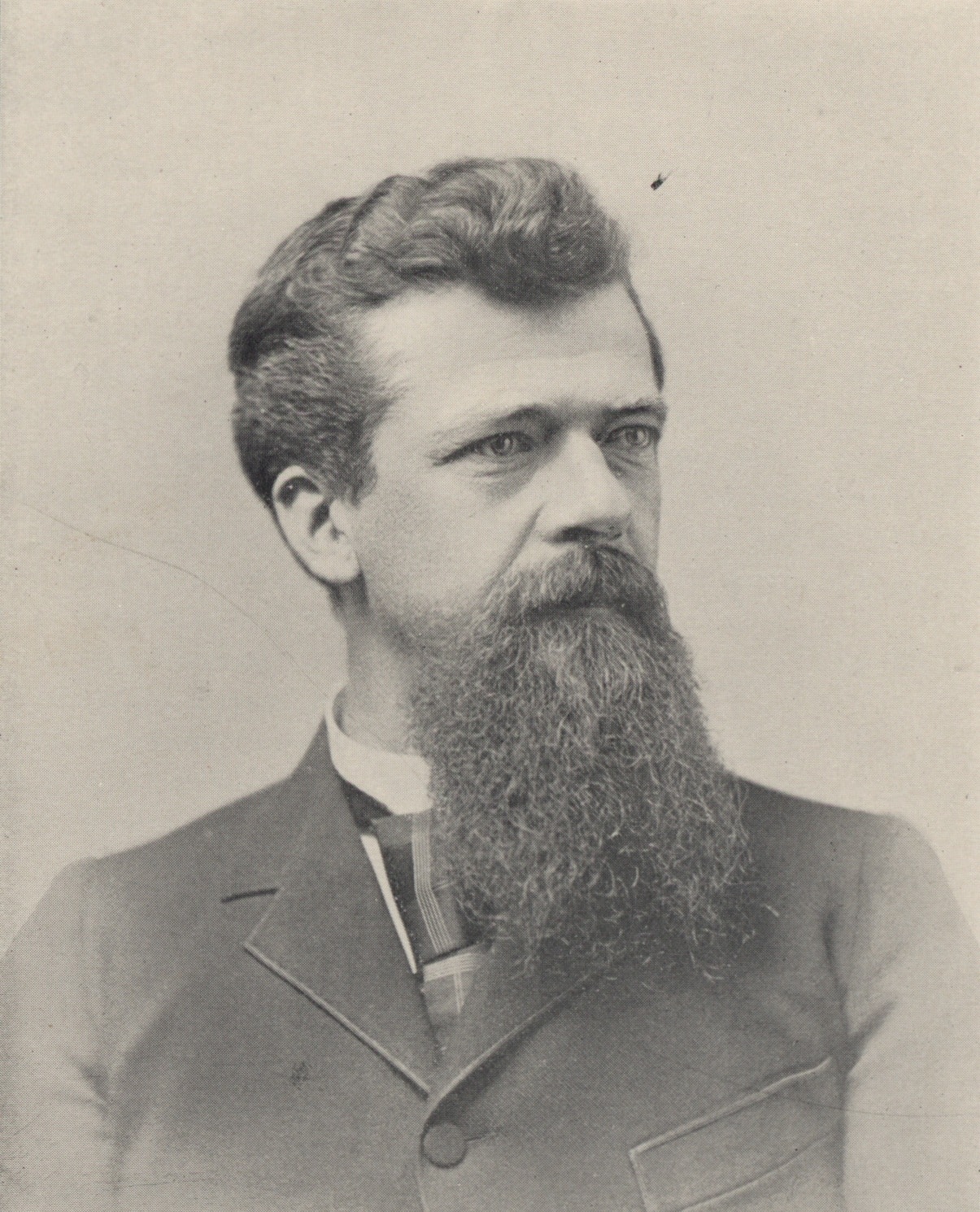Gideon Hawley (1797-1852) and his family were among the earliest pioneer settlers of Tazewell County, and Hawley himself has the distinction of being one of the co-founders of Pekin in January of 1830 (Gideon’s name appearing prominently in the official minutes of the settlers’ meetings that planned and named Pekin). Hawley is remembered for opening the first hotel/tavern in Pekin.
Hawley’s arrival at the future site of Pekin was so early that it was disputed whether it was Gideon’s son William, born in the fall of 1824, or Jonathan Tharp’s son Joseph, born who was born 10 March 1827, who was the first white child to be born at the future site of Pekin. Jacob Tharp in this diary states that Hawley did not build a cabin at the future site of Pekin until 1829, however.
After Gideon’s death in 1852, he was interred in a small pioneer burying ground on the Hawley farm south of Pekin, in Section 23 of Cincinnati Township. Ownership of the Hawley place passed to one of Gideon’s youngest children, Norman Clinton Hawley (1837-1918), who not only maintained the family farm but also began to mine the coal veins beneath the bluffs on his property. The coal that he brought out of his mines was loaded into train cars on a sidetrack of the Toledo, Wabash & Western Railroad.
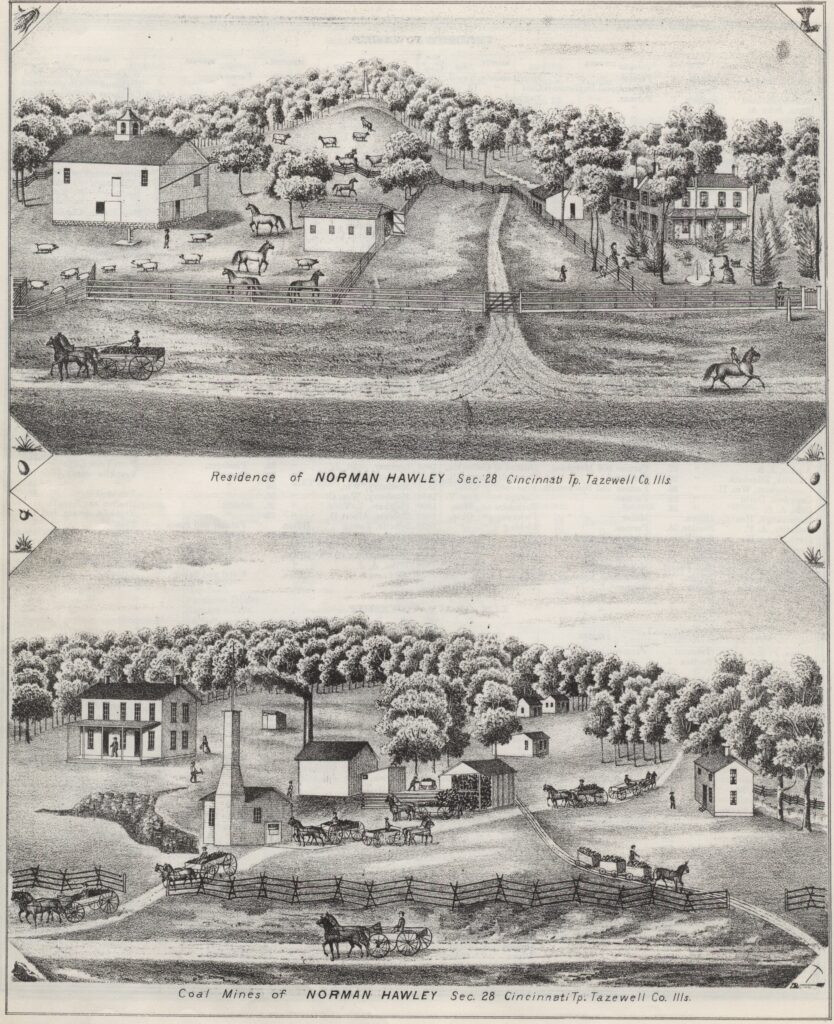
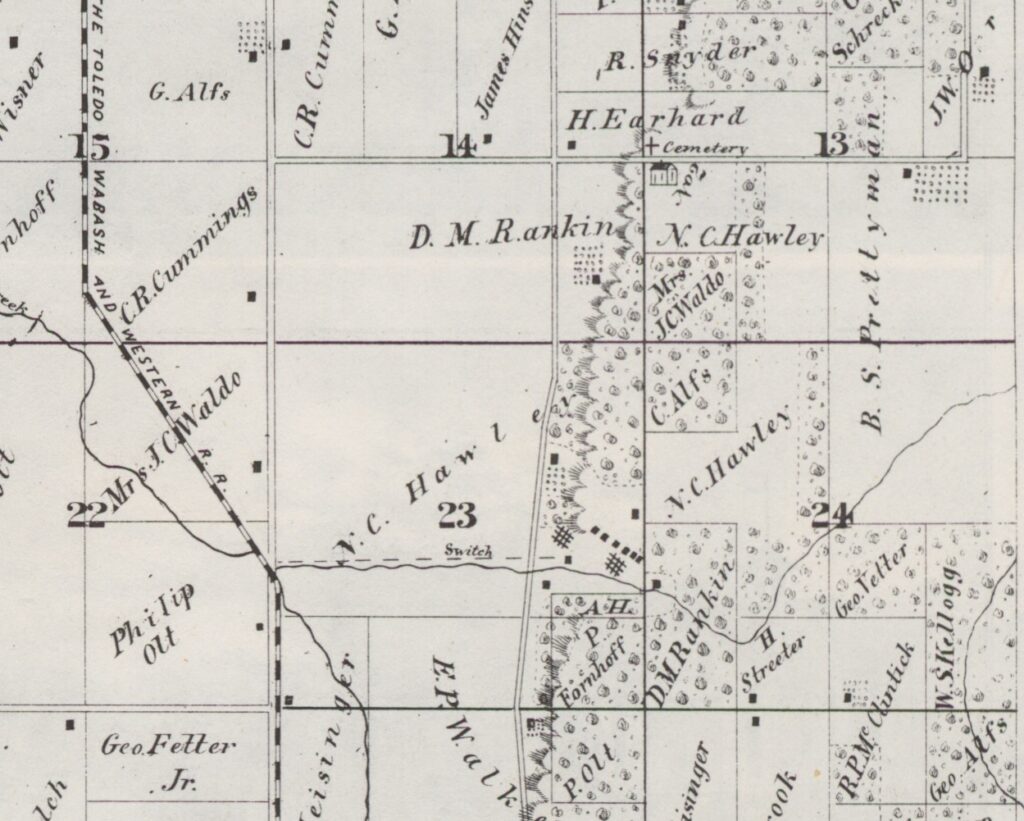
An extensive and quite glowing biographical sketch of Norman C. Hawley was included in the “Atlas Map of Tazewell County, Illinois” (1873), pages 50-51. The sketch also provides an overview of Gideon Hawley’s life.
NORMAN C. HAWLEY, Esq. — The subject of our sketch was born in Tazewell county, Illinois, on the 6th day of June, 1837, being the eighth of a family of nine children of Gideon and Elizabeth Hawley. Gideon Hawley was a native of the Green Mountain State, where he received his early training. In 1819 he emigrated west, and settled at Shawneetown, Illinois, where he became acquainted with Miss Elizabeth Caldwell, and to whom he was married. Soon after their marriage they removed to Sangamon county, Illinois, where Mr. Hawley engaged in farming. After a residence of five years in that county, they removed to, and settled in, Peoria county — locating in that portion which is now embraced within the limits of Tazewell county. They struck their tent on what is known as Lost Creek, where he raised one crop, after which they moved to the then small village of Pekin, where their son William was born, in the fall of 1824, and by many of the old settlers he is said to have been the first white child born in the Pekin (sic). From there Mr. Hawley moved with his family to a farm, which is now known as the Hampson farm, near Mackinaw, where he remained for several years; after which he purchased and moved upon the farm where his son Norman C. now resides.
Gideon Hawley was lineally descended from some of the Puritans who early settled in the New England colonies. He was elected a magistrate, and served as such for many years. Very early in life he became identified with the old whig party, and was a great admirer of its illustrious champion, Henry Clay. He was one among the first to favor the free-soil doctrine, and exercised a telling influence in the ranks of his party in Tazewell county. His death occurred at his residence on the 15th day of October, 1852. His widow is still living, in the enjoyment of good health, at the advanced age of seventy-one years.
The subject of this biography received his earliest culture in the schools of Tazewell county, and when about the age of sixteen years he attended Jubilee College, Peoria, where he spent one year, and then entered the Wesleyan University, at Bloomington. He prosecuted his studies in the latter institution about two years, and then returned to his home, and since then a greater part of his attention has been devoted to agricultural pursuits. About the year 1856 he became the principal owner of the old homestead, and subsequently purchased the interests of the remaining heirs.
In studying the life of our subject, we find a man who, by the death of his father, was early thrown to his own resources, and the acquisitions of his life are traceable to his own innate energy and ability, to which, more than any other cause, can be attributed the success which has crowned his every effort. He now owns a valuable farm, comprising eight hundred acres of some of the best lands of Tazewell county, and underlying much of this valuable body of land is a strata of coal with a vein four to five feet in depth. He is now operating a shaft which has a capacity of about seven hundred bushels per day, and has recently opened a new shaft with a capacity of two thousands bushels per day. He has also two hundred and eighty acres of coal land in Groveland township, and is also owner of some valuable city property in Pekin. Most of his time has heretofore been devoted to his large farming interests.
On the 1st of April, 1867 (sic – 1866), Mr. Hawley was married to Miss Mary E. Martin, only daughter of J. P. and Ellen Martin. She was born in Logan county, Illinois, of which portion of the state her father was among the early settlers. As the fruits of that union, they have had born to them three children, whose names, in the order of their ages, are as follows: James M., Gideon L., and Prairie Ellen. Mrs. Hawley is a member of the Christian Church, and is a devoted Christian woman.
In politics, Mr. Hawley is a staunch supporter of the principles promulgated by the republican party. His first vote for president was cast for the immortal Lincoln, and he has voted at every election since then — having twice voted for General Grant. During the late rebellion, the Union cause did not have a warmer supporter in Tazewell county than the subject of this sketch.
In reviewing the life of Mr. H., we find a man who early learned the importance of economy in the acquisition of wealth. His career has proved successful in everything pertaining to finances, and he is now among the opulent citizens of the county. In his social relations, Mr. H. is genial and courteous, benevolent, affable, and companiable in disposition. His amiable and intelligent wife dispenses her lavished hospitality with the ease and grace which characterizes the wealth agriculturists of Illinois. In Mr. H. we find a man who, in the broadest and most liberal sense, is emphatically self-made.
Six years after the publication of the “Atlas Map,” a brief biographical sketch of Norman C. Hawley was included in Charles C. Chapman’s “History of Tazewell County, Illinois” (1879), page 420, in that book’s account of the history of Cincinnati Township:
“N. C. Hawley. In 1837, June 6, Gideon and Elizabeth Hawley, while residing in this township, had born unto them a son, Norman C., the subject of this sketch. His father was a native of Vermont, and his mother, Elizabeth (Caldwell) Hawley, was born in Kentucky. This couple came to the State in 1819, and were among the earliest settlers in Tazewell county. Mr. H. received his education in the common schools, Jubilee College, Peoria, and Wesleyan University, Bloomington. He has been quite successful in life, and now owns one thousand acres of land, much of which is underlaid with a fine vein of coal, which he is working. April 1, 1867, he married Miss Mary E. Martin, of Logan county. Their children number four — James M., Gideon L., Prairie Ellen and Freddie S. Politically Mr. H. may be found with the Republican party. Post-office, Pekin.”
Besides the children of Norman and Mary listed in the above biographical sketches, they also had a son, George Arthur, born 25 Jan. 1873 or 1874 and died in infancy on 28 April 1874.
Despite the praise of Norman Hawley’s success in life, and his virtues and character, in the 1873 biographical sketch, later records show that, for whatever reason, Norman and Mary were not able to sustain an idyllic marital and family life. By the time of the 1900 U.S. Census, Mary was living and working in Chicago as a fortune teller, and her son Gideon, a day laborer was living with her. Not only is Norman not listed with them in that census record, but Mary is said to be “widowed” even though Norman was very much alive — the 1900 census shows him as “divorced,” living with the family of his daughter Prairie Ellen “Ella” Jury in Cazenovia, Woodford County, Illinois. Ten years later, the 1910 census shows Norman, “divorced,” as a patient at Jacksonville State Hospital. That is where he died on 3 Aug. 1918. His children had him buried at Springdale Cemetery in Peoria, and when Mary passed away on 13 Dec. 1922 in Washburn, Woodford County, Illinois, her family laid her to rest by Norman’s side.
